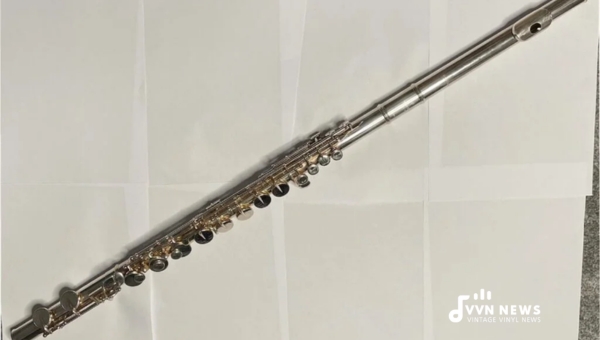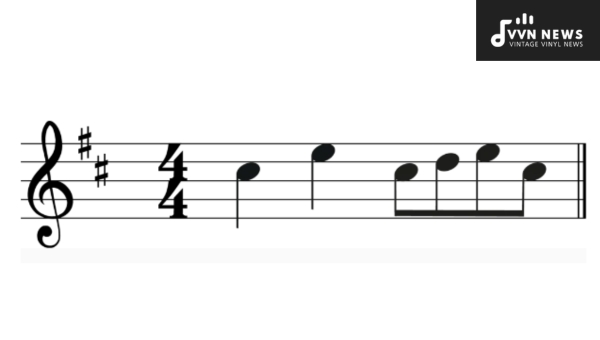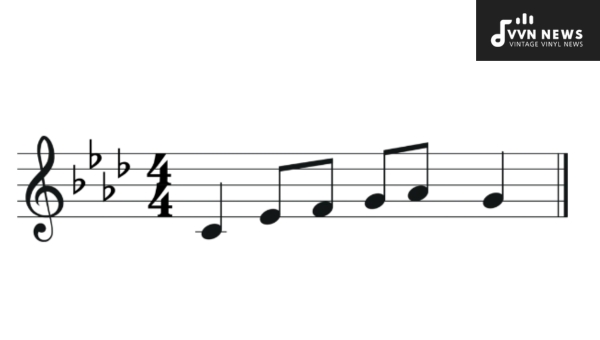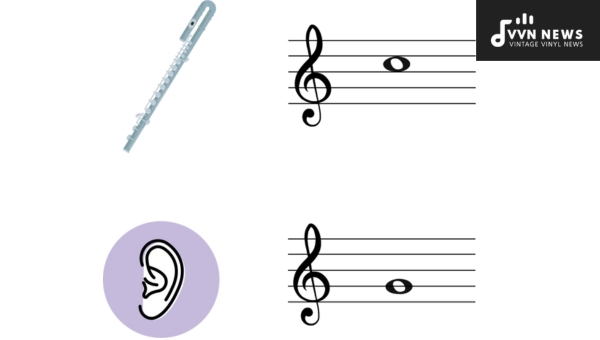As a musician, part of the journey is learning how to use different instruments effectively. One such instrument you may want to explore is the alto flute.
But before you start playing, it’s essential to understand how alto flute transposition works.
When you master this critical aspect, you open up a whole new world of music-making possibilities that can dramatically enhance your performances.
Maybe you’re an experienced flutist looking to broaden your repertoire or a passionate newbie excited to explore the unique sounds of the alto flute.
Whatever your background, getting familiar with transposition is an essential skill. It’s not as complicated as it might seem initially, provided you have the right guidance and some determination at hand.
Let’s journey through this fascinating subject together and set you on the road to becoming an even better musician.
What Is the Alto Flute in G?
The alto flute is a member of the flute family and is pitched in the key of G. It is larger than the standard C flute, with a longer body and wider tubing. This results in an instrument that produces lower and mellower tones compared to the C flute.
The alto flute plays a vital role in orchestras and ensembles, providing a unique and distinct sound that adds depth and richness to musical compositions. Its range spans from concert G3 to G6, allowing it to cover both middle and higher registers.
Due to its transposing nature, when playing the alto flute, musicians must be aware that written music will sound different when played on this instrument.
Therefore, understanding how to transpose music is crucial for instrumentalists who wish to master the alto flute.
How Can You Utilize a Transposition Chart for the Alto Flute?

Transposing music for the alto flute may seem like a daunting task, especially if you’re new to the instrument or transposing in general.
Thankfully, a helpful tool called a transposition chart can make this process much easier. Let’s take a closer look at how you can effectively utilize a transposition chart for the alto flute.
- Understand the Basics: Before diving into transposing with a chart, it’s crucial to have a fundamental knowledge of music theory and key signatures. Familiarize yourself with the concept of intervals and how they relate to transposition.
- Find a Reliable Transposition Chart: There are numerous transposition charts available online that specifically cater to the alto flute in G. Look for charts that provide accurate information and are easy to read.
- Locate Your Current Pitch and Desired Transposed Pitch: Once you have your chart handy, locate your current pitch on the left-hand side of the chart and identify your desired transposed pitch on the top row.
- Follow the Intersection: Locate where your current pitch intersects with your desired transposed pitch on the chart. The corresponding note displayed at this intersection is what you will need to play on your alto flute.
- Understand Key Signatures: Keep in mind that when you transpose with an alto flute, key signatures change as well. Make sure you understand how key signatures work and adjust accordingly when using a transposition chart.
- Practice and Familiarize: Utilizing a transposition chart may feel unfamiliar initially, but with practice, it becomes more intuitive. Start with simple tunes or exercises and gradually work your way up to more complex pieces.
Remember that while a transposition chart is an incredibly useful tool, it’s essential to train your ear as well.
Develop your ability to recognize intervals by listening to reference pitches or using apps specifically designed for ear training.
Also Read: Achieving Perfect Flute Intonation [Essential Tips & Techniques]
Steps to Transpose Music from G to C for Alto Flute
Transposing music from G to C for the alto flute may seem daunting at first, but with a systematic approach, it becomes much more manageable. Here are the essential steps you need to follow:
- Understand the interval: The alto flute is written a perfect fifth above the concert pitch, meaning that every note played on the alto flute will sound five notes lower than what is written. For example, when an A is written on sheet music for the alto flute, it will actually sound like an E in concert pitch.
- Identify the key signature: Look at the key signature of the original piece and determine how many sharps or flats are present. Make note of any accidentals within the piece as well.
- Write down the notes: Grab a piece of staff paper or utilize music notation software and write down all the notes from the original piece in their original pitch.
- Apply transposition: Starting with the first note, move each note down by a perfect fifth interval (7 half steps) to find its transposed equivalent. Use a transposition chart or calculator if needed.
- Adjust key signature and accidentals: Take into account any sharps or flats indicated by the key signature and make adjustments accordingly in your transposed piece.
- Check for accuracy: Once you have completed transposing all the notes, double-check your work by playing through your newly transposed piece on your alto flute or listening to it using computer software if available.
- Make necessary edits: If you notice any errors or inconsistencies in your transposed piece, make appropriate edits to ensure accuracy and clarity.
By following these steps, you can effectively transpose music from G to C for the alto flute and adapt pieces originally written for other instruments or concert pitch instruments.
How to Transpose Music from C to G on the Alto Flute?

Transposing music from C to G on the alto flute may seem like a daunting task at first, but with a clear understanding of the process, it can become much more manageable. Here are some detailed steps to help you successfully transpose your music:
- Understand the difference in pitch: The alto flute is pitched in G, which means that when you play a written C on the alto flute, it sounds as a concert G. This knowledge is crucial for accurate transposition.
- Identify the key of the original piece: Determine whether the piece you want to transpose is written in a major or minor key. This information will guide your transposition process.
- Start with the melody: Begin by identifying and isolating the melody line of your music. Focus on one note at a time.
- Find the interval: Determine how many steps higher or lower you need to move each note to transpose it into G on the alto flute. This process requires an understanding of musical intervals.
- Apply the interval adjustment: Adjust each note in your melody according to the determined interval. Move each note up or down by that number of steps.
- Consider accidentals and key signatures: Pay close attention to accidentals (sharps, flats, and naturals) that appear in your original piece and make adjustments accordingly in your transposed version. Also, consider any changes in key signatures if relevant.
- Double-check for accuracy: After transposing all notes, go through your newly transposed version carefully to ensure accuracy and correct any mistakes or inconsistencies.
Transposing music requires practice and patience. It’s beneficial to have a good ear for pitch and a solid foundation in music theory, but with careful attention to detail and practice using different techniques, you’ll soon become proficient in transposing from C to G on the alto flute.
Also Read: How To Get The Perfect Flute Embouchure [A Detailed Guide]
How Does Computer Software Aid in Transposing for the Alto Flute?

Transposing music for the alto flute can be a complex process, especially when dealing with pieces written for other flutes.
However, thanks to advancements in technology, musicians now have access to various computer software programs that aid in transposing music for different instruments, including the alto flute.
Here, I’ll outline how computer software can assist you in transposing music for the alto flute.
- Transposition Tools: One of the primary ways computer software can help with alto flute transposition is through specialized transposition tools. These tools allow you to input the original sheet music and indicate your desired key or pitch for the alto flute. The software will then automatically transpose all the notes for you, saving you time and effort.
- Music Notation Software: Popular music notation software such as Sibelius or Finale offer features that simplify transposing music for different instruments. These programs allow you to easily change the key of a piece and automatically transpose all the notes accordingly. You can also make adjustments to accommodate specific instrumental ranges and create clean and professional-looking sheet music.
- Audio Preview: Some computer software programs provide an audio preview feature that lets you listen to how your transposed music will sound on an alto flute before printing or performing it live. This allows you to ensure accuracy and make any necessary adjustments before finalizing your transposed score.
- MIDI Integration: Many transposition software comes with MIDI integration capabilities, allowing you to connect your computer directly to a MIDI keyboard or electronic wind instrument (EWI). This integration enables real-time note input and playback, making it easier to experiment with different key signatures on your alto flute.
- Educational Resources: Certain computer applications also offer educational resources specific to transpose’s topic/courses/music theory lessons/intermediate & advanced tutorials that can help musicians understand more about transposing music for the alto flute. These resources may include interactive exercises, videos, and explanations to enhance your understanding of transposition principles.
It’s important to note that while computer software can be a valuable tool in transposing music for the alto flute, it is still crucial to have a solid foundation in music theory and an understanding of the alto flute’s unique characteristics.
Computer software should be seen as a helpful aid rather than a replacement for musicianship skills.
Also Read: 12 Tips To Improve Your Low Notes On The Flute [Easy Strategies To Learn]
FAQs about Alto Flute Transposition
Why does the alto flute need transposition?
The alto flute is pitched in G, which means that when you read or play a C on the alto flute, it sounds like a concert G. Transposition is necessary to ensure that the music played on the alto flute corresponds correctly to the notes written on the sheet music.
Can I use a transposition chart to help with alto flute transposition?
Yes, utilizing a transposition chart can be an excellent tool for alto flute players. It provides a clear reference guide, enabling you to easily adjust your sheet music and play with accuracy in the correct key.
How do I transpose music from G to C for the alto flute?
To transpose music from G to C for the alto flute, simply subtract two sharps or add two flats from each note’s key signature. This will effectively convert the sheet music from its original key of G to C.
How do I transpose music from C to G on the alto flute?
To transpose music from C to G on the alto flute, you need to add two sharps or subtract two flats from each note’s key signature. This adjustment will allow you to play your sheet music in G while effectively transposing it from its original key of C.
Can computer software be helpful for transposing music for the alto flute?
Yes, various computer programs and software applications are available that aid in transposing music. These tools can automatically transpose your sheet music for you, saving time and ensuring accuracy.
Conclusion
Understanding alto flute transposition is crucial for any flutist looking to play the alto flute in G.
By utilizing transposition charts and following step-by-step instructions, musicians can successfully transpose their music between the C and G flutes.
Computer software can be a valuable tool in aiding the transposition process.
With a solid grasp of alto flute transposition, flutists can confidently navigate through musical pieces and contribute to various ensembles with ease.








